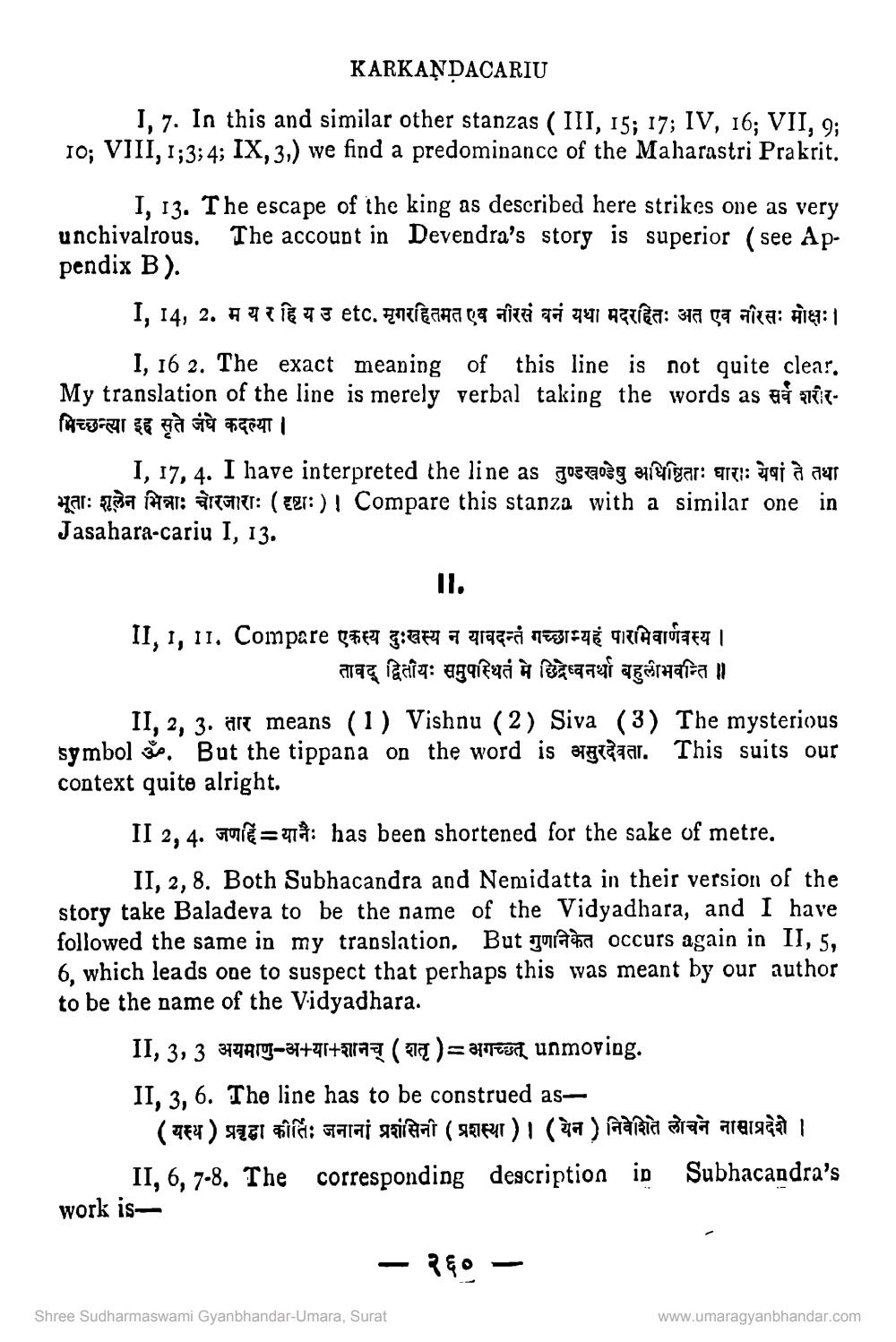________________
KARKAŅDACARIU 1.7. In this and similar other stanzas (III, 15; 17; IV, 16; VII, 9; 10; VIII, 1;3; 4; IX, 3,) we find a predominance of the Maharastri Prakrit.
I, 13. The escape of the king as described here strikes one as very unchivalrous. The account in Devendra's story is superior (see Appendix B).
I, 14, 2. A JE TË TJ etc. antigaha ça aitti ad qui africa: sta ga area: hier: 1
1, 16 2. The exact meaning of this line is not quite clear, My translation of the line is merely verbal taking the words as a ritमिच्छन्त्या इह सृते जंघे कदल्या ।
I, 17, 4. I have interpreted the line as gosaog aitrisar: arti: Trai à aur par: sa faar: arcanar: ( EZT:) | Compare this stanza with a similar one in Jasahara-cariu I, 13.
II, 1, 11. Compare geen g: art 7 grac-i ngisTË gitigarotzea
__ तावद् द्वितीयः समुपस्थितं मे छिद्रेष्वना बहुलीभवन्ति ॥ II, 2, 3. art means (1) Vishnu (2) Siva (3) The mysterious symbol šs. But the tippana on the word is atataaar. This suits our context quite alright.
II 2, 4. quid=978: has been shortened for the sake of metre.
II, 2,8. Both Subhacandra and Nemidatta in their version of the story take Baladeva to be the name of the Vidyadhara, and I have followed the same in my translation, But quand occurs again in II, 5, 6, which leads one to suspect that perhaps this was meant by our author to be the name of the Vidyadhara.
II, 3, 3 397814–81+01+iraz (zą ) = 311Fesch unmoving. II, 3, 6. The line has to be construed as
( 964 ) gigi Fila: garai szihat (geral) I (wa) afla araq araigaa i
II, 6, 7-8. The corresponding description in Subhacandra's work is
- P&O -
Shree Sudharmaswami Gyanbhandar-Umara, Surat
www.umaragyanbhandar.com




